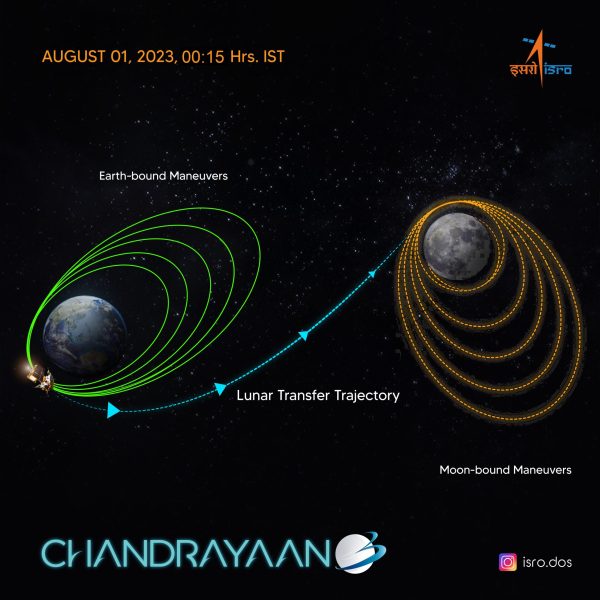
Chandrayaan-3 leaves Earth's orbit; what’s next in its journey to Moon?

With a crucial manoeuvre performed in the wee hours of August 1, the Chandrayaan-3 (CY3) spacecraft launched on July 14, 2023, is finally on its way for a rendezvous with the Moon.
The CY3 craft comprises a lander module (LM) with a small rover module (RM) tucked in its belly. The lander-rover combo is mounted on the top of a propulsion module (PM). The propulsion module will power the craft from Earth’s orbit until the Lander-Rover combo CY3 is injected into a stable lunar orbit.
Explained | Chandrayaan-3: Four ways to go to the Moon
Crucial step completed
Since its launch, until now, the CY3 has made five full circles and an additional half circle around the Earth. During this period, each time the spacecraft reached the point near the Earth (called perigee), the thruster rockets in the propulsion module were fired, technically called ‘burns’, making the path slowly spiral outward. If we throw a stone high in the air with a particular impulse, it goes to a specific height before falling. Likewise, when the spacecraft is given an additional impulse, it will take the craft higher than the previous orbit. With each burn, the apogee, the farthest point in orbital from the Earth, progressively increased from the initial 36,500 km to 41,762 km, 1,400 km, 71,351 km, and 1,27,603 km.
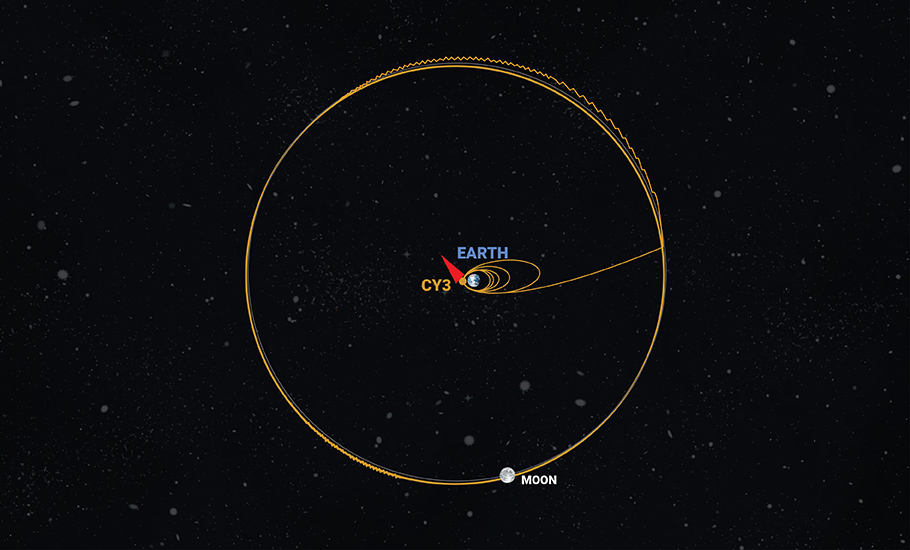
At 0.15 am on August 1, the craft again reached the perigee, the nearest point in its path around the Earth. One final time the thrusters were fired. The impulse gained from this burn resulted in the craft moving at 10.4 kilometres per second. Hurled with that velocity, the vessel will go up, some thousands of kilometres beyond the Moon. With this, ISRO has performed a critical manoeuvre in the journey towards the Moon, called Trans Lunar Insertion (TLI) burn.
This has slingshot Chandrayaan-3 towards the Moon. For the next few days, the craft will hurl towards a point in space, where it will meet the Moon at the appointed time: Saturday, August 05, 2023.
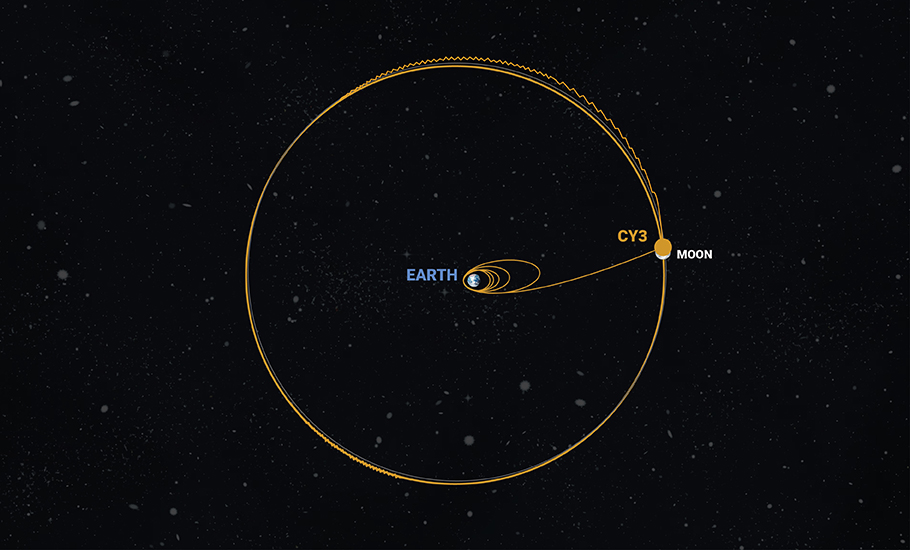
Aiming for the Moon
While the craft is flying in space, the Moon also travels around the Earth. The Earth is orbiting the Sun. Thus the relative and absolute positions of the Sun, the Moon and the Earth keep changing continuously. Hence aiming for the Moon is a complex choreography. Therefore one has to compute the precise location in space where the Moon will meet the spacecraft at the designated time and aim at that point.
The spacecraft’s angle, direction, and orbit must be precisely orchestrated to meet the Moon at the designated location in space. One space scientist described the difficulty level as throwing a ball from Delhi and accurately striking a one-rupee coin held high at Kanyakumari.
Also read: Chandrayaan-3 decoded: Here’s how ISRO plans to soft land on Moon in 45 days
What next?
The average distance from Earth to the Moon is about 384,400 km. Both the Earth and the Moon exert gravitational attraction. With just one-sixth the mass of Earth, the sphere of influence of the Moon extends just to 62,630 km from it. The Moon’s sphere of influence is the region where the gravitational attraction of the Moon is greater than that of Earth. Once the CY3 reaches this point, it will fall into the Moon’s sphere of influence and race towards it like a falling stone. It will crash or fly past the Moon if its speed is unchecked.
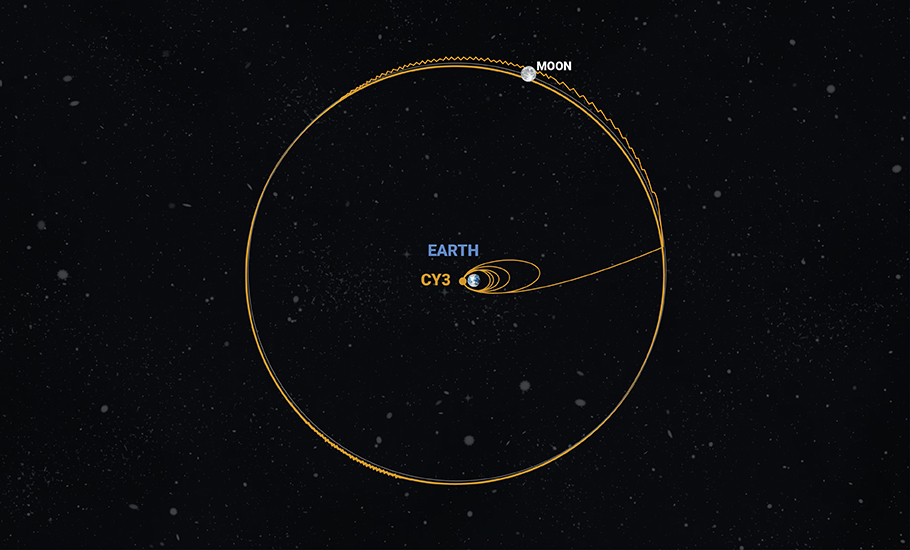
While watering plants holding a pipe, as the water jets out on one side, we feel a force pushing us backwards. Likewise, the craft’s speed can be slowed by firing the thrusters in the same direction as the motion. However, until now, the nozzle of the thrusters was facing backwards. The burns generated impulses in the same direction of the motion. The thrusters’ nozzle has turned 180 degrees in space to fire the thrusters and reduce the speed. The small thrusters in the propulsion units will be fired to make the craft somersault in space. After this space acrobatics, the nozzle of the thrusters will point towards the direction of motion.
Called retro firing, the rockets will then be fired along the direction of the spacecraft’s motion. Impeded by this opposition thrust, the spacecraft will begin slowing down. Once the craft’s speed is sufficiently low, the gravity of the Moon will capture the ship and make it go around it in an elliptical orbit.
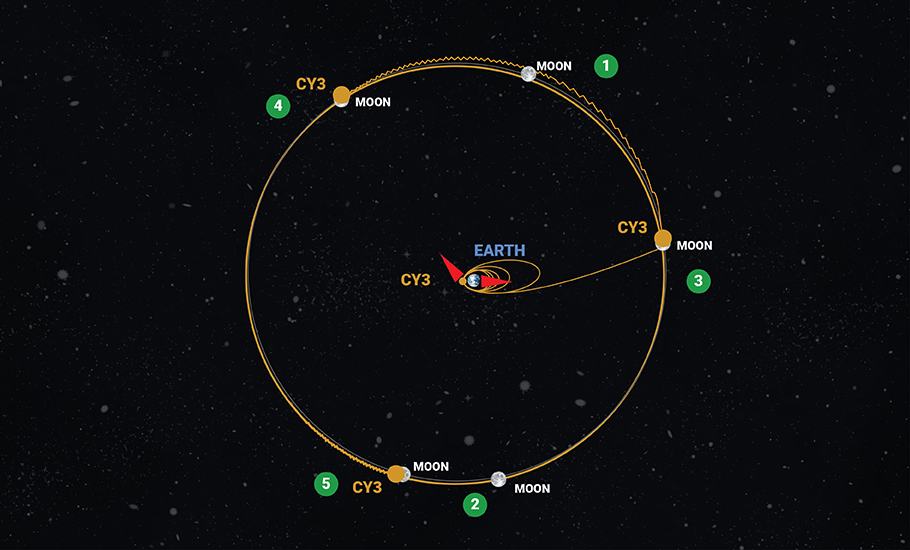
Moon bound
After the capture by the Moon, the CY3 will make a series of orbital manoeuvers for the next few days to complete its orbit stable around the Moon. At first, the nearest point of the orbit will be around 120 kilometres and the farthest point at 18,000 kilometres from the Moon.
Slowly the height of the trajectory will be reduced. Finally, the orbit will become circular with an altitude of 100 kilometres from the surface of the Moon. ISRO plans to execute four burns when the craft is at the farthest point to reduce the craft’s velocity. As the velocity lowers, the orbit also comes down.
Also read: Chandrayaan-3 launch: Far more than reaching for the Moon
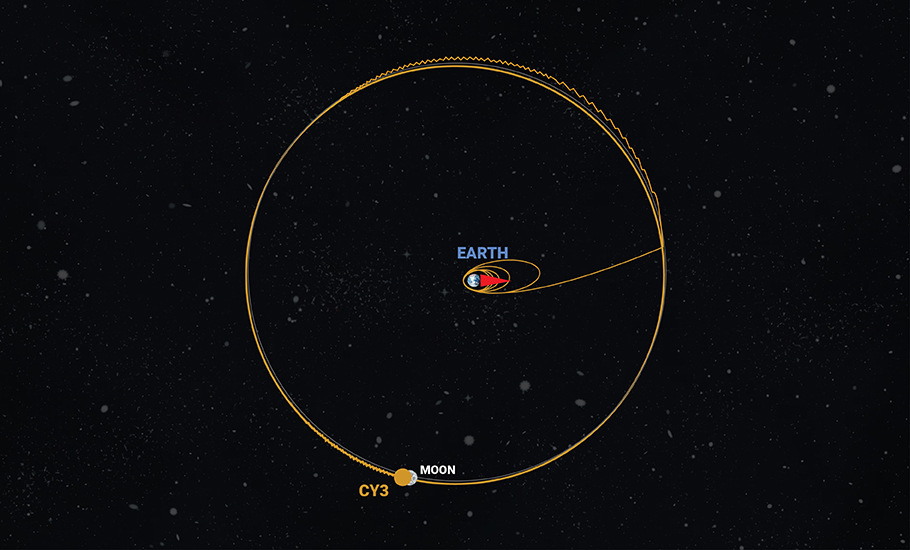
Once the orbit is circular 100×100 km, the health of the lander and rover modules will be ascertained. On August 17, 2023, the command for the orbiter-rover combo to detach from the propulsion module will be executed. Until now, all the operations were performed by the propulsion unit. Now the lander rover will be on its own.
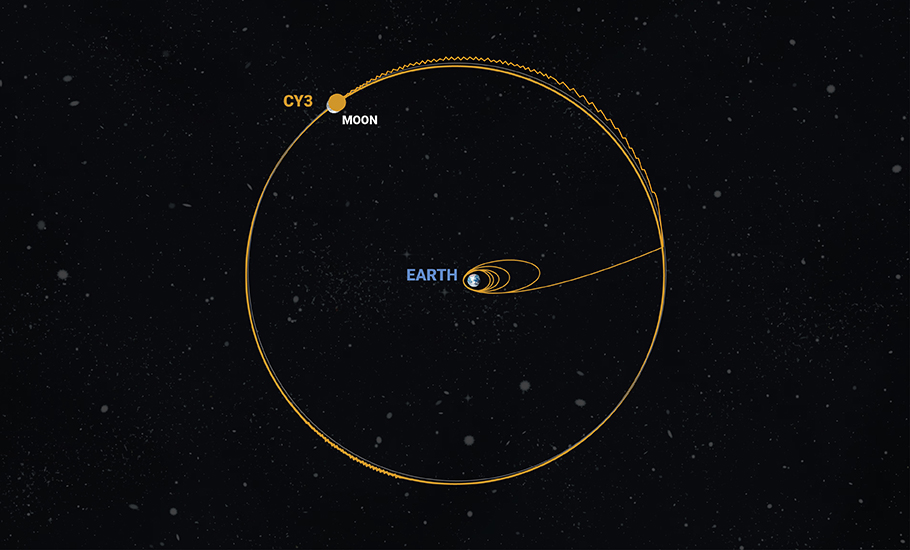
If all goes according to plan, on August 23, 2023, the lander-rover combo will make a landing attempt. Using the four thrusters in its belly, the lander will soft-land on the Moon, marking a milestone in the history of ISRO.

